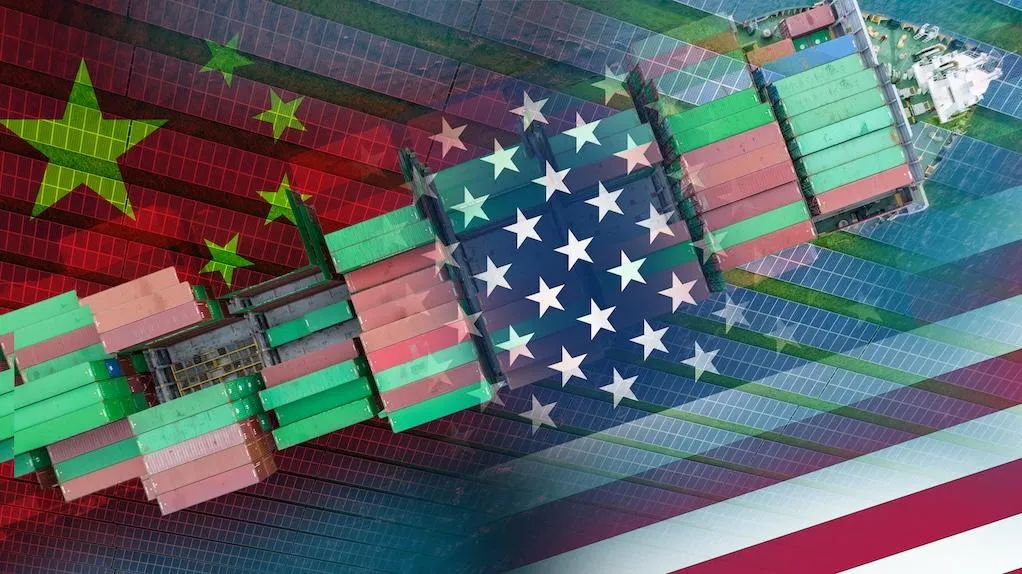
Caught in the Crossfire: Trade Wars, Tariffs, and CRE
Trade tensions are reshaping the global economy—and commercial real estate is right in the crosshairs. As of April 2025, the U.S. has imposed a baseline 10% tariff on all imports, with even steeper rates targeting specific countries: 34% on Chinese goods, 20% on EU products, and 24% on Japanese imports.
While the near-term picture remains murky, some longer-term shifts are coming into focus. Companies are redrawing supply chain maps, moving away from traditional port cities and toward inland and border regions.
Domestic manufacturers may see a renaissance, driving new demand for industrial real estate in the Rust Belt and beyond.
At the same time, the march of technology—especially AI and proptech—is rapidly transforming how real estate is leased, managed, and valued. And if spending is any indication in the midst of recession rumors, tech may not just be a disruptor—it may become an anchor for CRE.
In this landscape, where the only constant is change, commercial real estate finds itself as both casualty and catalyst—caught between rising costs, shifting demand, and relentless innovation.
Read on, you’ll learn why:
Port-Centric Industrial Real Estate Is Losing Ground
Tariffs Are Freezing New Development
Office and Industrial Leases Face a Major Reset
CRE’s New Power Player Is AI
Industrial and Logistics: Winners, Losers, and the Great Realignment
Industrial real estate-long the darling of investors riding the e-commerce wave-is now at the epicenter of the trade storm.
Warehouses and distribution centers near major ports like Los Angeles, Long Beach, and Houston are seeing a sharp drop in leasing activity, as the flow of goods from China slows to a trickle.
Property values are softening, and developers are shelving new projects as costs become unpredictable.
Yet, not all industrial markets are suffering equally. As supply chains pivot away from China, demand is shifting inland and southward. Distribution hubs in Dallas–Fort Worth, Indianapolis, Atlanta, and along the U.S.-Mexico border are seeing increased interest as companies seek alternative routes and suppliers.
“Supply chain bottlenecks may shift demand toward domestic production, boosting the need for manufacturing and warehousing. Markets with strong port activity may see lower tenant occupancy as trade routes adjust.” - Houlihan Lokey
This geographic realignment is redrawing the map of industrial real estate, creating both risks and opportunities for investors. This is especially true considering the wave of lease expirations coming due. Any changes that happen now can have long-standing ripples for the larger CRE environment.
“Over 265 million square feet of commercial real estate leases are set to expire in 2025, with industrial properties representing the largest share of these expirations.” - Trepp
Construction and Development: Costs Climb, Projects Pause
Perhaps nowhere are the effects of tariffs more visible than in the construction sector.
With one-third of all U.S. construction materials imported-much of it from China, Canada, and Mexico-tariffs have sent prices for steel, aluminum, lumber, and other essentials soaring.
The National Association of Home Builders estimates that these tariffs have added nearly $9,200 to the cost of building a typical single-family home, a figure echoed in the commercial sector.

The result? Developers are pausing or canceling projects, waiting for clarity on costs, and passing increases down to tenants in the form of higher rents. In markets where supply is already tight, this is exacerbating affordability issues and driving up lease rates.
Capital Flows and Investment: Uncertainty Rules
The unpredictability of U.S. trade policy is also chilling cross-border investment. Foreign investors, wary of both the immediate impact of tariffs and the longer-term risk of retaliatory measures, are rethinking their U.S. real estate strategies. Capital that once flowed freely into trophy office towers or logistics hubs is now more cautious, seeking stability in a landscape defined by volatility.
At the same time, higher inflation and borrowing costs-both direct consequences of tariffs-are making it harder to finance new deals or refinance existing ones. Cap rates are expanding, property values are coming under pressure, and the calculus for both buyers and sellers is shifting.
Office Market Disruption
Tariffs are hitting the office sector from multiple angles. Companies facing higher costs for imported goods and materials are slowing hiring, delaying capital spending, and reconsidering their space needs. For office landlords, this means a fragile recovery could stall just as it was gaining traction.
After years of pandemic-driven disruption and remote work, the U.S. office market entered 2025 with a sense of cautious optimism. Early in the year, leasing activity surged-businesses leased approximately 115 million square feet in the first quarter, a 13% jump from the previous quarter and the strongest showing since mid-2019.
Major financial firms, law practices, and other large office users led the charge, especially in coveted locations like New York’s Park Avenue, where demand for trophy assets outpaced limited supply.

Yet, this momentum now faces a critical test as renewed trade tensions and sweeping tariffs inject fresh uncertainty into the market. Many companies, wary of committing to long-term leases in a potentially volatile environment, are pausing expansion plans or downsizing their footprints.
Developers, already contending with elevated construction costs due to tariffs on steel and other materials, are delaying new projects and renovations, further limiting the pipeline of modern, amenity-rich office space.
Markets with strong international tenant bases-such as Boston, San Francisco, and Chicago-are particularly vulnerable to a leasing slowdown as global firms reassess their U.S. presence. Meanwhile, Sunbelt cities and non-gateway markets with more domestically focused tenants may prove more resilient
Despite these headwinds, some positive structural shifts are underway. Office-using employment is growing, and the share of fully remote job postings has dropped significantly since 2022, as major employers-including the U.S. government, Amazon, and JPMorgan- enforce stricter in-office attendance mandates. This is gradually increasing office utilization and could drive higher leasing activity throughout 2025, particularly for modern, well-located buildings.
Trophy and A+ office spaces remain in high demand, with limited new supply likely to push some tenants into slightly lower-tier properties as availability tightens. However, the national vacancy rate remains elevated at 14%, and net absorption is still negative, reflecting ongoing move-outs and the delivery of new space outpacing demand.
The Economy in Flux: When Nothing Happens
In this climate of uncertainty, the CRE market is experiencing a peculiar kind of paralysis. With the economy in a state of flux, decision-makers are hitting the pause button:
New projects pause: Developers and investors are shelving plans, unwilling to commit capital until the dust settles.
AI spending continues: Amid the uncertainty, one area remains red-hot: artificial intelligence. CRE firms are doubling down on AI-driven tools for lease pricing, risk modeling, and operational efficiency-betting that technology will help them navigate the storm
Consider Blackstone, in the midst of a large-scale pullback amid recession rumors, has invested approximately $200 million in AI initiatives across its portfolio companies, focusing on areas such as lease pricing optimization and risk modeling. Notably, Blackstone's $10 billion acquisition of QTS Data Centers underscores its commitment to AI infrastructure, with the data center's valuation reportedly increasing to over $25 billion post-acquisition.
As leasing slows and volatility rises, firms that can harness AI for better forecasting, automation, and decision-making will gain a significant competitive edge.
Firms that already have the scale to invest in advanced AI deepening the gap between tech-forward owners and smaller players still reliant on spreadsheets.
Navigating the Storm: Strategies for CRE
In this environment, adaptability is key. Developers are diversifying suppliers, exploring alternative materials, and embracing modular construction to mitigate cost increases.
Investors are shifting focus to secondary markets and asset types less exposed to trade volatility, while tenants are renegotiating leases and seeking longer terms to lock in rates. Everyone is watching policy developments closely, ready to pivot as the landscape evolves.
Trade tensions and tariffs have injected a new level of complexity into the commercial real estate market. While the challenges are real-rising costs, shifting demand, and economic uncertainty-the sector is also demonstrating resilience and adaptability. The winners will be those who can read the signals, embrace innovation, and remain nimble as the ground continues to shift beneath their feet.
In a year where “nothing happens” because everyone is waiting for clarity, the CRE market is quietly being transformed. As ad spend pauses, projects stall, and AI spending accelerates, the smart money is on those who can navigate uncertainty, seize emerging opportunities, and help shape the new normal for commercial real estate.
So don't miss a beat. Get the latest CRE news delivered to your inbox by subscribing to the blog below.




